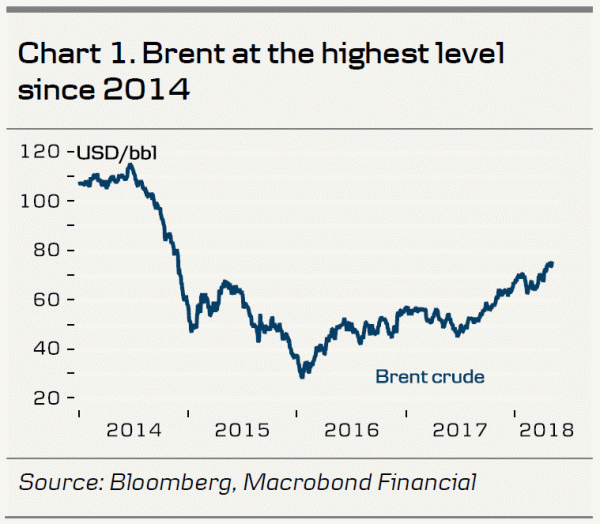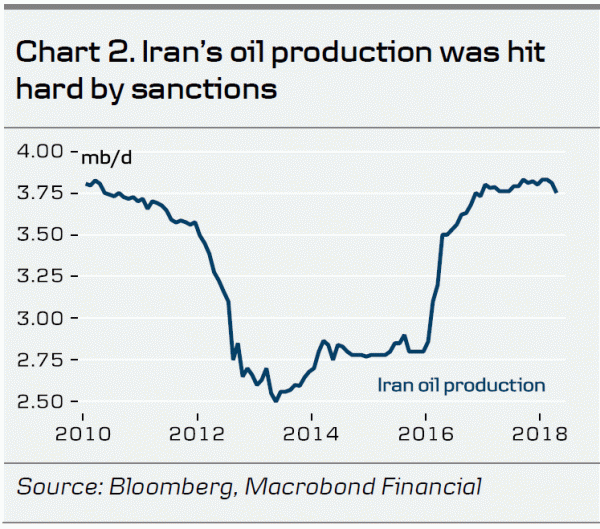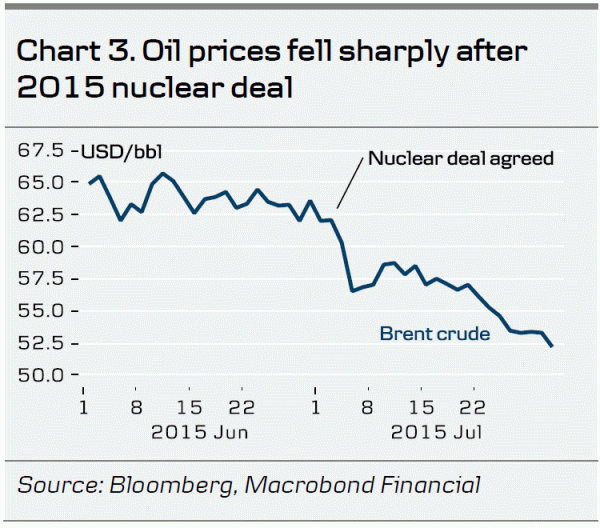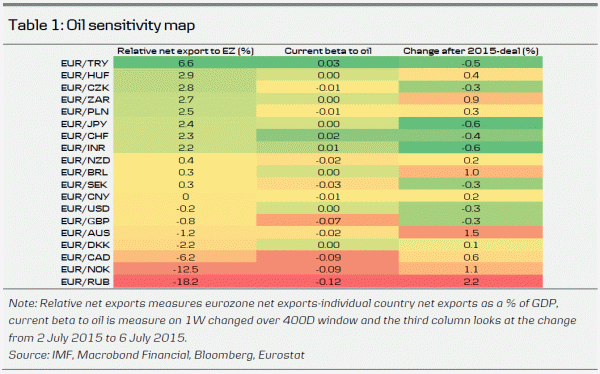- The waiver on US nuclear-related sanctions on Iran expires on 12 May – we see a tail risk of Iran’s oil exports being hit by sanctions and Brent rising to USD80-85/bl.
- This creates upside risks for EUR/TRY, EUR/JPY and EUR/CHF and downside risks for EUR/CAD, EUR/NOK and EUR/RUB.
Oil event risk on the increase – focus turns to Iran
Oil prices rallying to the highest level since 2014 is due partly to rising event risk in the oil market (Chart 1). We highlight the tense geopolitical situation in the Middle East and the deteriorating economic situation in Venezuela as two hotspots for a sudden oil supply disruption, which could send the oil price higher and affect FX markets. Focus is now on Iran, as the waiver on US sanctions related to the 2015 nuclear deal expires on 12 May. US President Donald Trump has argued against a continuation of the current nuclear deal and we see a tail risk where sanctions related to Iran’s oil exports are reinstated (Chart 2) and the price of Brent jumps to USD80-85/bl. If the deal continuesd, oil prices could fall to around USD72-73/bl from the current level.
In terms of the FX impact, shown in Table 1 below, we map the sensitivity to oil price changes of different major and emerging market currencies vis-à-vis the EUR. We measure on (1) relative net exports to eurozone net exports, (2) the current beta on changes in the oil price and (3) how the currency pair was affected when oil prices fell close to 10% following the 2015 Iran nuclear deal (Chart 3). Based on a cross-check of Table 1, there is upside risk to EUR/TRY, EUR/JPY, EUR/CHF and EUR/INR from the extreme case scenario outlined above and downside risk to EUR/CAD, EUR/NOK and EUR/RUB. Notably, EUR/USD maintains a minuscule sensitivity to oil, which means that an oil spike should not be able to derail the current negative momentum in the cross.
















